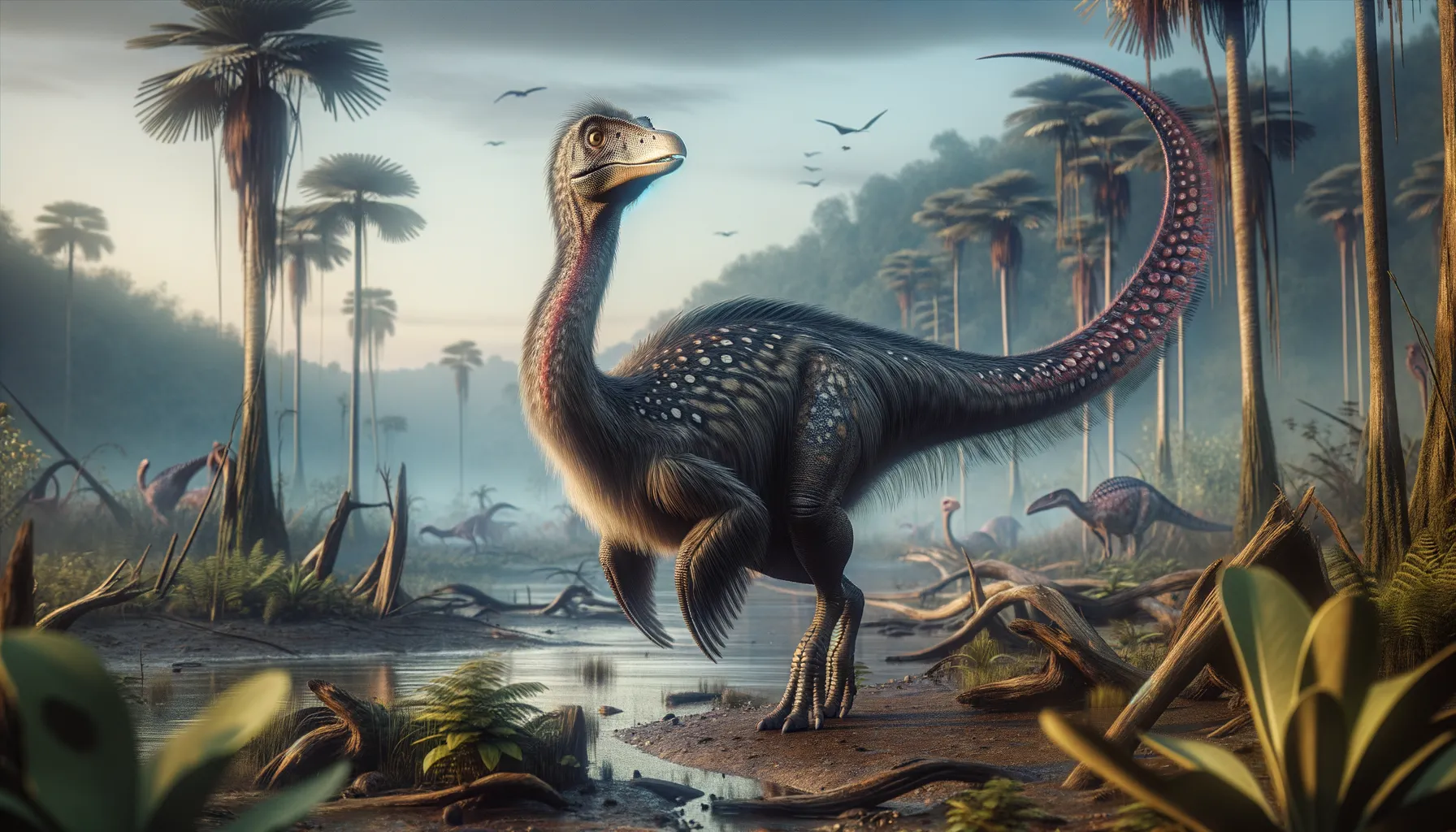
Elmisaurus
A swift sprinter of ancient plains.
Period
Cretaceous
Length
Approximately 6 feet long.
Height
Approximately 3 feet tall.
Weight
Around 100 pounds.
Elmisaurus was a small, cursorial dinosaur belonging to the theropod category. Known for its ostrich-like appearance, it lived during the Late Cretaceous. This dinosaur had strong hind limbs and a beak suited for its omnivorous diet. Elmisaurus is intriguing due to its unique foot structure, which provides clues about its locomotion and possibly its behavior. Though relatively small, it adapted well to its surroundings, which were likely diverse and challenging.
Diet
Elmisaurus was omnivorous, feeding on a mix of plants, small animals, and insects. This diet allowed it to thrive in various environments, as it could exploit different food sources based on availability.
Hunting
While Elmisaurus primarily foraged, it likely hunted smaller animals and insects when the opportunity arose. Its quick movements and sharp beak would have been useful in catching unsuspecting prey.
Environmental challenges
Living in the Late Cretaceous, Elmisaurus faced a variety of environmental changes, including fluctuating climates and shifting ecosystems. Predation was also a significant challenge, as it had to avoid larger carnivorous dinosaurs. The dinosaur's ability to adapt its diet and habitat was crucial for its survival in these conditions.
Speed
Moderately fast, capable of quick bursts.
Lifespan
Approximately 10 to 20 years.
First discovery
Identified in Mongolia in 1981.
Fun Facts
- Elmisaurus means 'foot lizard,' named for its distinctive foot bones found in fossils.
- This dinosaur lived during the Late Cretaceous period, around 70 million years ago.
- Fossils of Elmisaurus have been discovered mainly in Mongolia, highlighting its Asian origins.
- Elmisaurus was part of the theropod group, which means it walked on two legs and was likely a swift runner.
- Although not a very large dinosaur, Elmisaurus was probably about the size of a modern-day turkey.
- Despite its size, Elmisaurus may have been a fierce predator or scavenger of its time.
- The most unique feature of Elmisaurus is its foot structure, which has helped paleontologists understand more about dinosaur mobility.
Growth and Development
Elmisaurus underwent rapid growth to quickly reach a size that afforded some protection from predators. As it matured, it developed strong hind limbs that were critical for escaping threats and foraging efficiently. The unique structure of its feet may have helped it navigate its environment more effectively as it grew.
Habitat
Elmisaurus inhabited the plains and forests of Cretaceous Mongolia, which provided diverse food options and shelter. The region was interspersed with rivers and small lakes, offering a rich ecosystem. These habitats required Elmisaurus to be versatile and adaptable to survive.
Interaction with other species
Elmisaurus likely coexisted with other theropods, herbivorous dinosaurs, and various smaller species. It may have competed with similar-sized dinosaurs for food resources. Its presence could also indicate a complex food web within its ecosystem, involving a range of predators and prey.
Natural lifespan
Elmisaurus likely had a lifespan of up to 20 years in the wild.
Reproduction
Elmisaurus likely reproduced by laying eggs, similar to other theropods. The dinosaur may have been involved in some basic nesting behavior to protect its offspring. Fossil evidence suggests it might have laid several eggs at a time, ensuring some would survive.
Social behaviour
Elmisaurus might have lived in small groups or pairs, especially during breeding seasons. Its social structure, while not fully known, likely included some form of cooperation for foraging and protection against predators.
Fossil locations
Fossils of Elmisaurus have been primarily found in Mongolia. This region has provided significant insights into the dinosaur's structure and lifestyle. The fossils have helped paleontologists piece together the ecology of the Late Cretaceous in this part of the world.
